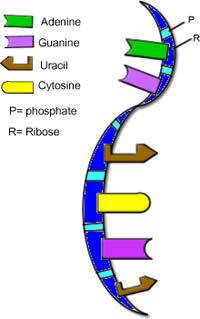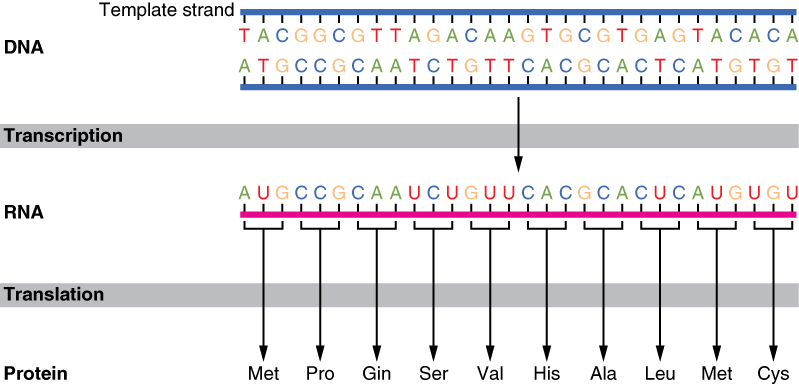

Before the genetic code was determined experimentally, it was reasoned that if all codons were assumed to have the same number of bases, then each codon would have to contain at least three bases.Ĭodons having only one base at a time will make only 4 types which are insufficient for making 20 amino acids. The genetic code is the list of all codons and the amino acid that each one encodes.

Each sequence of three adjacent bases in mRNA is a codon that specifies a particular amino acid (or chain termination). Secondly, mutations may also be caused by errors made during the division of the cell ( mitosis and meiosis).The four bases in DNA – A, T, G, and C are sufficient to specify the 20 amino acids in proteins because each codon is three bases in length. First, environmental factors such as chemicals, radiation, and ultraviolet light from the sun can cause mutations. Gene mutations are most commonly the result of two types of occurrences. Base-pair insertions or deletions result when nucleotide bases are inserted into or deleted from the original gene sequence. Point mutations alter a single nucleotide. Gene mutations can be generally categorized into two types: point mutations and base-pair insertions or deletions. If the codons are changed, the amino acids and thus the proteins that are synthesized will not be the ones coded for in the original gene sequence. This is because changes in the nucleotide sequences change the codons. Altering nucleotide sequences most often results in non-functioning proteins. This change can affect a single nucleotide pair or larger segments of a chromosomes. Jonsta247/ Wikimedia Commons/CC BY-SA 4.0Ī gene mutation is an alteration in the sequence of nucleotides in DNA. Three types of point mutations include silent, nonsense, and missense mutations. Once transcription has ended, the amino acid chain is modified before becoming a fully functioning protein. The mRNA molecule will continue to be translated until a termination or stop codon is reached. During translation, each RNA codon is read and the appropriate amino acid is added to the growing polypeptide chain by transfer RNA. Once in the cytoplasm, mRNA along with ribosomes and another RNA molecule called transfer RNA, work together to translate the transcribed message into chains of amino acids. Since transcription occurs in the nucleus of a cell, the mRNA molecule must cross the nuclear membrane to reach the cytoplasm. When RNA polymerase transcribes the DNA, guanine pairs with cytosine and adenine pairs with uracil. Certain proteins called transcription factors unwind the DNA strand and allow the enzyme RNA polymerase to transcribe only a single strand of DNA into a single stranded RNA polymer called messenger RNA (mRNA). DNA transcription is the process in protein synthesis that involves the transcribing of genetic information from DNA to RNA. The information in DNA is not directly converted into proteins, but must first be copied into RNA. Proteins are produced through the processes of DNA transcription and translation. Transfer RNA are a necessary component of translation, the biological synthesis of new proteins in accordance with the genetic code. Thr: Threonine Trp: Tryptophan Tyr: Tyrosine Val: Valine Met: Methionine Phe: Phenylalanine Pro: Proline Ser: Serine His: Histidine Ile: Isoleucine Leu: Leucine Lys: Lysine The abbreviations and names of all 20 amino acids are listed below.Īla: Alanine Arg: Arginine Asn: Asparagine Asp: Aspartic acidĬys: Cysteine Glu: Glutamic acid Gln: Glutamine Gly: Glycine Reading the table, if uracil (U) is in the first codon position, adenine (A) in the second, and cytosine (C) in the third, the codon UAC specifies the amino acid tyrosine. The RNA codon table above lists codon combinations and their designated amino acids. For example, the codons UCU, UCC, UCA, UCG, AGU, and AGC all specify the amino acid serine. Multiple codons may also specify the same amino acid. The codon AUG codes for the amino acid methionine and serves as a start signal for the beginning of translation. Sixty-one codons specify amino acids and three (UAA, UAG, UGA) serve as stop signals to designate the end of protein synthesis. Therefore, there are 64 possible codon combinations. Any of the four nucleotides in RNA may occupy one of three possible codon positions. The order of the bases in the codon sequence determines the amino acid that is to be produced. RNA codons designate specific amino acids.


 0 kommentar(er)
0 kommentar(er)
